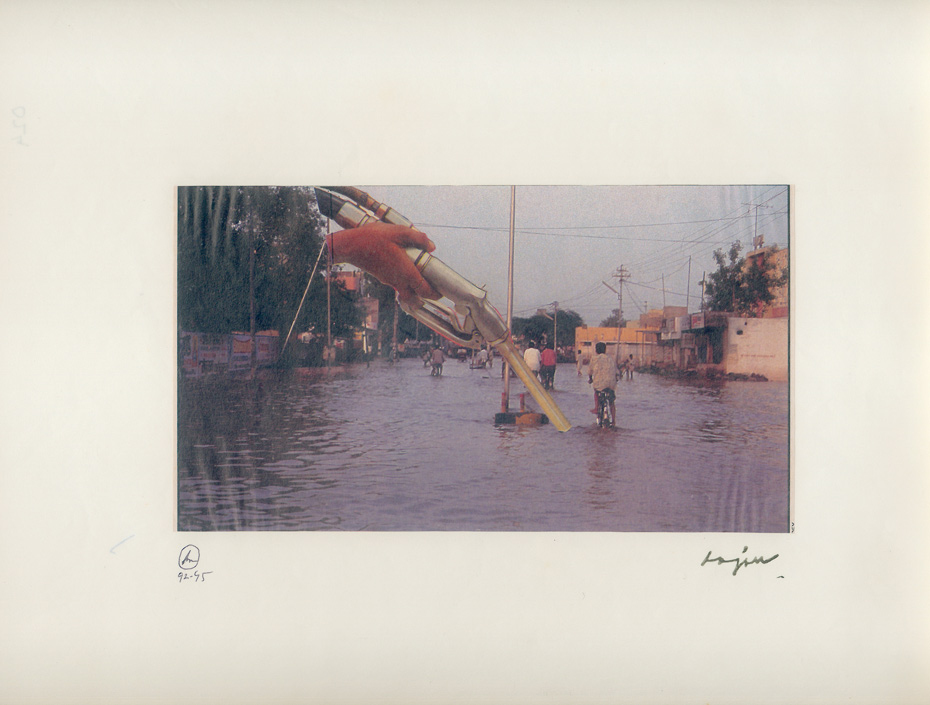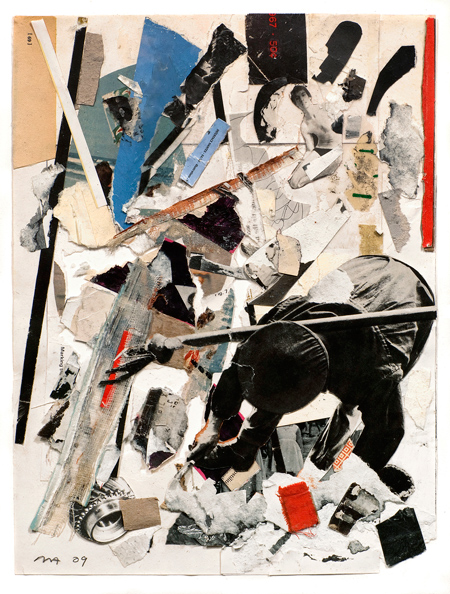
William Kherbek heads to the exhibition exploring the world of the photo-collage
The Indian writer and activist Arundhati Roy was talking about injustice when she said that when once you see certain things in the world, you can’t “unsee” them; things can never go back to quite the same state of blissful ignorance. The photo-montage works of John Stezaker aren’t quite in the same league as say, child labour or drone warfare, but his work does make an impression and once you see it, the next time you see a photo-collage, good luck not thinking about it. In a sense, Stezaker is an example of what the extremely serious American literary critic Harold Bloom describes as “apophrades”, the phenomenon of a more recent artist, a poet in Bloom’s case, resembling the tone and approach of an earlier artist so much and with such facility that the dynamic of influence seems to work backward; audiences read the earlier artist through the work of the later. All this is apropos of a show titled Perspectives on Collage at the Photographers’ Gallery. You really have to work to unsee Stezaker when looking at the works of artists who have been around nearly as he has, but whose aesthetic is slowly being devoured by the potency of Stezaker’s influence. It’s a problem too, because an artist like C.K. Rajan who is featured in the show offers a very “now” perspective on photo-collage but seeing his half dismembered bodies floating in, and, in some cases forming, landscapes, and his abrupt but apposite juxtapositions, you feel there’s a kind of lineal descent from Stezaker which logic tells you cannot be there. Rajan’s subject is the economic and cultural modernisation of India, about a million miles from the subject matter of Stezaker, but the oneiric quality to the results of Rajan’s compositional sensibility always seems to merge with a pervasive, if amorphous, Stezakerianism. It’s rather like the works are a kind of meta-montage grafted together unwittingly and unwillingly. Rajan has plenty to say in his own right, but in the all pervasive media age in which we dwell, you have to fight to see its uniqueness. A somewhat Rajanian formulation, come to think of it.

Speaking of the all pervasive media age, the work of Clunie Reid offers an antidote to the creeping infestation of Stezekerianism. Reid works are bold, crass, and brassy (in)digestions of the world as regurgitated by the world wide web. The works are somewhere between advertising billboards, Chinese scroll paintings, and internet memes given the Godzilla treatment. There’s an unstable balance of threat and cuteness about the works that makes one truly fear for the future of humankind, especially when you think of how quickly Warhol and Lichtenstein were absorbed by the advertising they subverted. For the moment though, Reid’s works are exhaustingly compelling and truly feel like the kind of Merz-werks the great collagiste Kurt Schwitters, himself the subject of an exhibition of the Tate Britain, envisioned the form could make possible. Batia Suter, too, offers a way out of the classic cut-and-paste approach to collage. Her work in the show, Wave, floor version #1 consists of a series of images of the sea from books overlain with each other. The uneven narratives it generates, plesiosaurs float pacifically next to windjammers, are true to the spirit of collage without rigidly adhering to the obvious methodologies, and there’s a nice destabilisation of the boundaries between collage and installation.
Perspectives on Collage runs until 7 April at The Photographers’ Gallery, 16-18 Ramillies Street, London W1F 7LW




